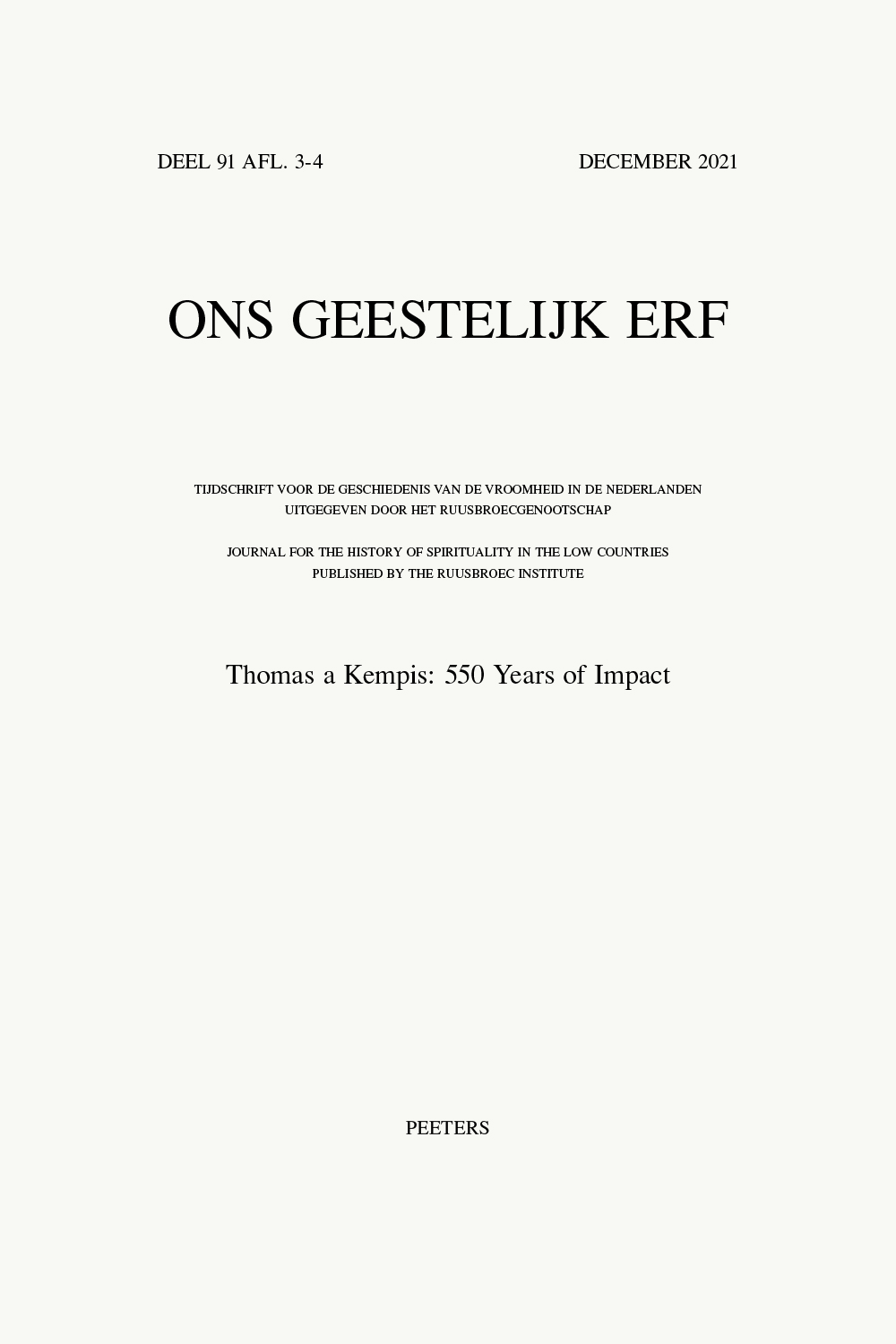 previous article in this issue previous article in this issue | next article in this issue  |

Preview first page |
Document Details : Title: De chronologie van Ruusbroecs werken volgens de Groenendaalse codex Author(s): KIENHORST, Hans , KORS, Mikel M. Journal: Ons Geestelijk Erf Volume: 75 Issue: 1 Date: Maart 2001 Pages: 69-101 DOI: 10.2143/OGE.75.1.565521 Abstract : This article is the fourth in a series dedicated to the major manuscripts of Ruusbroec’s works. The present publication was preceded by: ‘Corpusvorming van Ruusbroecs werken’, in: Ons Geestelijk Erf 72 (1998), pp. 3-53; ‘Fragment van een onbekend Ruusbroec-verzamelhandschrift’, in: Ons Geestelijk Erf 72 (1998), pp. 164-72; ‘Een studiereis naar Groenendaal. De Nacomelinc en de totstandkoming van Ruusbroec-handschrift D’, in: Ons Geestelijk Erf 72 (1998), pp. 221-45. This contribution deals with the table of contents, the pro- and epilogues, the headings, and the running titles in the manuscript usually referred to as ‘A’. MS A is the surviving part of the once bipartite Groenendaal codex, which contained all of Ruusbroec’s works, except for his letters, and was written ca. 1365. Of particular interest is the table of contents in MS A, which not only provides information concerning the treatises, but also determines the periods in which Ruusbroec ‘published’ them. As we will show, MS F transmits a copy of the table of contents in accordance with the lost part of the Groenendaal codex. Thus it is possible to make a reconstruction of the original table, that enables us to distinguish three periods in Ruusboec’s life to which the publication of his works can be related, i.e.: [1] as a secular priest in Brussels (1317-43), [2] as a hermit in the woods near this town (1343-50), and, finally, [3] as the prior of the Groenendaal monastery (1350-81). The reconstruction, however, poses a major problem for the chronology of Ruusbroec’s works. According to the reconstructed table of contents of the Groenendaal codex, Die geestelijke brulocht saw the light when Ruusbroec was the prior of the Groenendaal monastery, whereas the communis opinio among Ruusbroec experts to date has been that it belongs to the Brussels’ period. There is, however, much more evidence dating from the fourteenth century, which shows that the Brulocht has to be postdated. Most likely, it was written in the period during which Ruusbroec lived as a hermit (i.e. between 1343 and 1350). As for the chronology in general, he never published his first work, Dat rijcke der ghelieven, written in Brussels. Therefore, only the publication of a section of Van den geesteliken tabernakel can be related to the city (1327-43). When he was a hermit (1343-50) Ruusbroec published three minor works: Vanden blinkenden steen, Vanden vier becoringhen, and Vanden kerstenen ghelove (the latter is also his only strictly catechetical treatise). This entails that the greater part of Ruusbroec’s works were disseminated after 1350, when he was a prior. Perhaps this is due to the fact that during the fourteenth century heresy was widely spread in Brabant, so it may not have been without risks for Ruusbroec to publish his mystical works. As a prior, of course, it was less likely that he had to fear any form of persecution by the inquisition. The real problems started after his death, when his mystical phenomenology came under the attacks of Heinrich von Langenstein († 11-2-1397) and Jean Gerson. |
|


